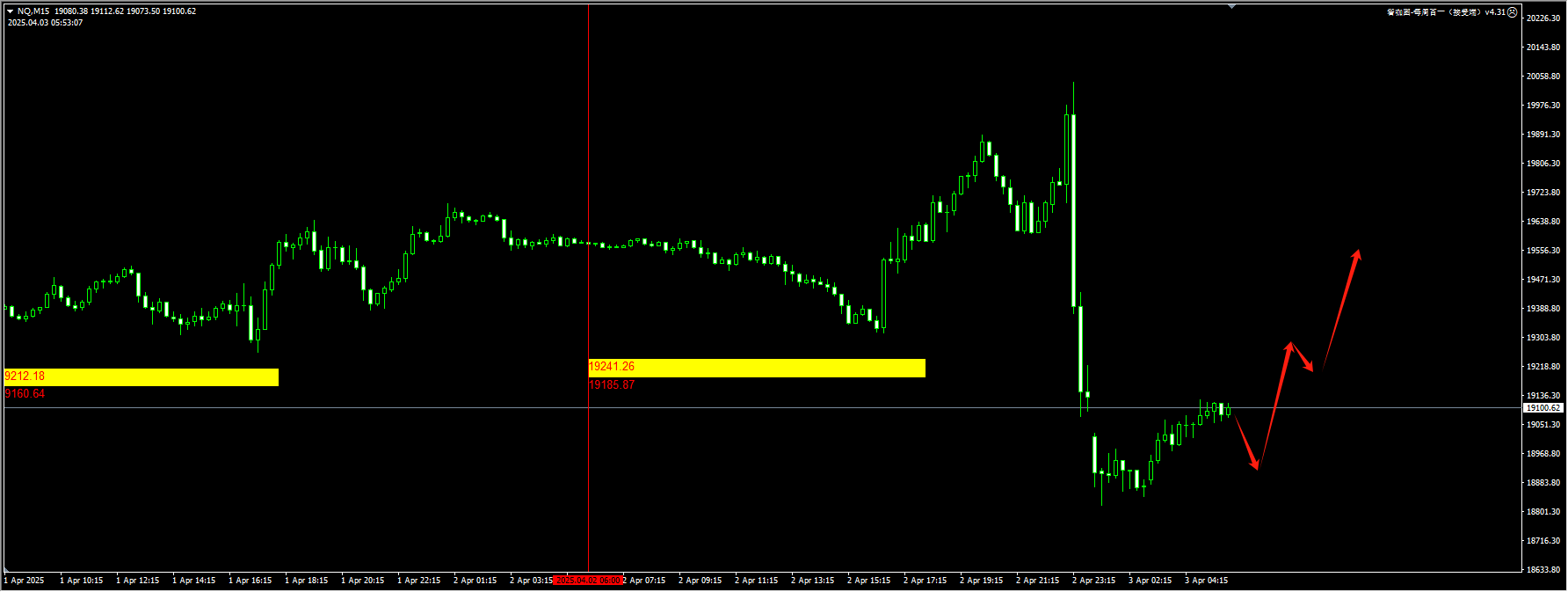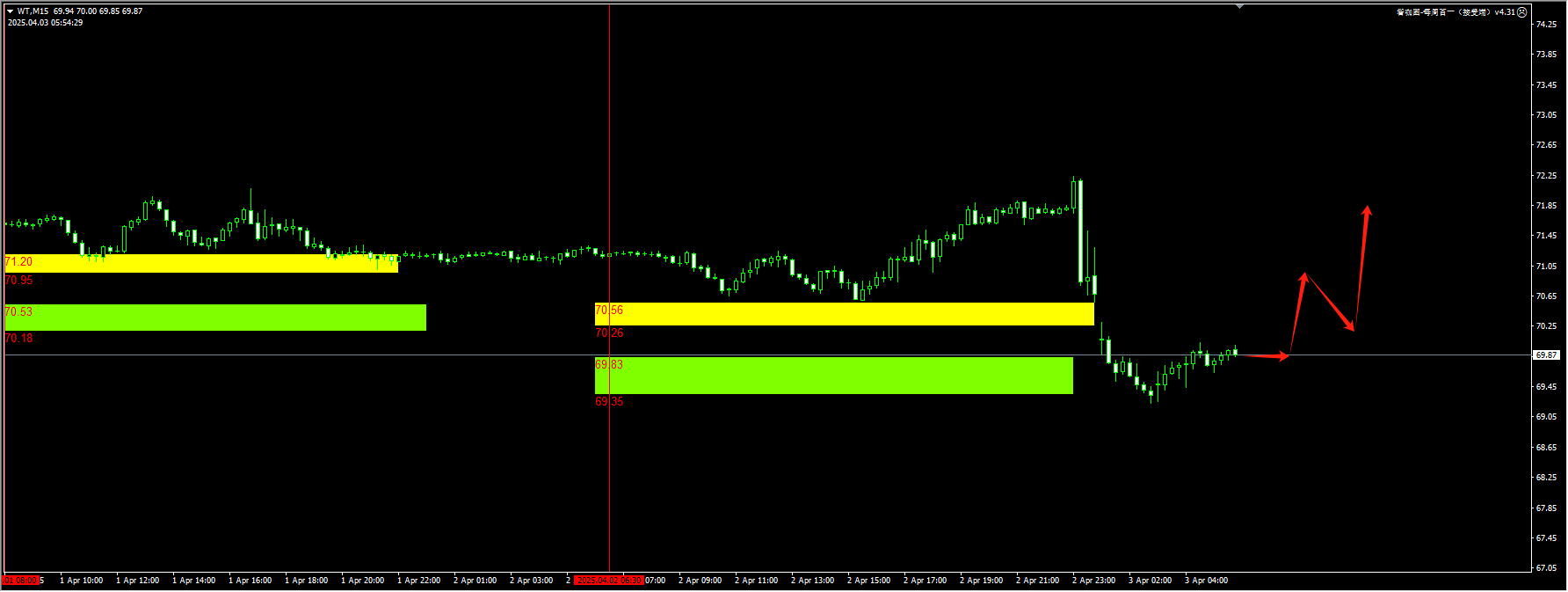On Thursday, the Japanese yen was the best-performing major currency as US President Donald Trump’s announcement of tariffs stoked safe-haven demand and Japanese bond prices rose. Tokyo’s stock market fell.
The yen rose as much as 1.1% against the dollar to 147.69, its biggest gain since February 20, while sovereign bond prices rose and the yield on Japan’s 10-year government bond fell by the most since August 2024.
Investors weighed the potential impact of Trump’s tariffs on the United States’ global trading partners. Japan, facing a 24% tariff, saw its stock market plunge. Both the Topix index and the Nikkei 225 stock average dropped by more than 4% before recovering somewhat.
As investors flocked to safe-haven assets, US Treasuries and bonds in other major markets rose in price, with the yield on New Zealand’s 10-year sovereign bonds falling by more than 10 basis points and the yield on Australia’s 10-year government bonds posting its biggest decline since July.
“I think we have to completely change our existing assumptions,” said Hiroshi Matsumoto, a senior client portfolio manager at Pictet Asset Management in Tokyo. The unwinding of carry trades could help push the yen to the 140 level against the dollar. “We will experience a rapid change in earnings expectations, almost like during the 2020 COVID-19 pandemic.”
Matsumoto also said that it has become more difficult for the Bank of Japan to raise interest rates now. Overnight index swap transactions have pushed down expectations of a rate hike. On Thursday, the possibility of a rate hike before September was 80%, compared with 92% on Wednesday.
US President Donald Trump said that the United States would start imposing a 10% tariff on its global trading partners, and dozens of countries with the largest trade imbalances would face significantly higher tariffs. After that, the US stock market reversed its trend and dropped sharply.
By 4:45 p.m. New York time, futures tracking the S&P 500 and Nasdaq 100 indexes were down 1.5% and 2.3% respectively, as large-cap technology stocks such as Nvidia, Tesla, Microsoft and Apple declined. Airline stocks also fell, with Delta Air Lines, Southwest Airlines and United Airlines Holdings all dropping.
Trump said on Wednesday that he would impose at least a 10% tariff on all goods exported to the United States. China would face a 34% tariff, the European Union a 20% tariff and Vietnam a 46% tariff.
“It’s worse than investors expected,” said Eric Beiley, executive vice president of Steward Partners Wealth Management. “At first, futures rose in after-hours trading because Trump said it would be ‘reciprocal,’ but the reality is that the situation is worse because the U.S. has imposed high tariffs on Japan and the European Union.”
U.S. Treasury Secretary Scott Bessent urged U.S. trading partners not to take retaliatory measures. Strategists said that if the situation escalates due to retaliation, the yen could rise further.
Carol Kong, a strategist at Commonwealth Bank of Australia, said: “As more trade news emerges, I expect the yen to continue to rise. Retaliation from foreign governments will further intensify the strength of safe-haven currencies and the weakness of risk currencies, and this will be the next catalyst, which will trigger the US to raise tariffs further.”
Technical analysis:
Gold: After the overnight price dropped back to around 3100, a strong V-shaped reversal occurred, and then a new high of 3167 was reached in the morning session. Continue to maintain an active buying strategy for the day. Whenever there is a new demand zone or a signal to sweep liquidity, attempts should be made as much as possible. For detailed positions, please consult the plugin.

(Gold 15-minute chart)
The plugin is updated from 12:00 to 13:00 every trading day. If you want to experience the same plugin as shown in the chart, please contact V: Hana-fgfg.
Nasdaq: Yesterday, our plugin clearly reminded that only when it breaks below the yellow zone can we start considering looking for a buy signal. Intraday, we suggest paying attention to the battle around 19,200. If it can recover above that level, then a 1-2 times buy strategy should be considered. For detailed positions, please consult the plugin.

(NASDAQ 15-minute chart)
The plugin is updated from 12:00 to 13:00 every trading day. If you want to experience the same plugin as shown in the chart, please contact V: Hana-fgfg.
Crude oil: After testing the support near 69.50 overnight, the price has stabilized and there is a chance for a rebound today. It is recommended to pay attention to the resistance at 70.25/50. If it can break through and hold above, there is a possibility of a rebound towards 71 and 71.80 today. For detailed positions, please consult the plugin.

(Crude Oil 15-Minute Chart)
The plugin is updated from 12:00 to 13:00 every trading day. If you want to experience the same plugin as shown in the picture, please contact V:Hana-fgfg.
Today’s key financial data and events to focus on:
16:30 UK March Markit/CIPS Services Purchasing Managers’ Index
17:00 Eurozone Producer Price Index (Year-on-Year) for February
20:30 U.S. Seasonally Adjusted Initial Jobless Claims (in thousands) (to 0329)
22:00 U.S. March ISM Non-Manufacturing Purchasing Managers’ Index

